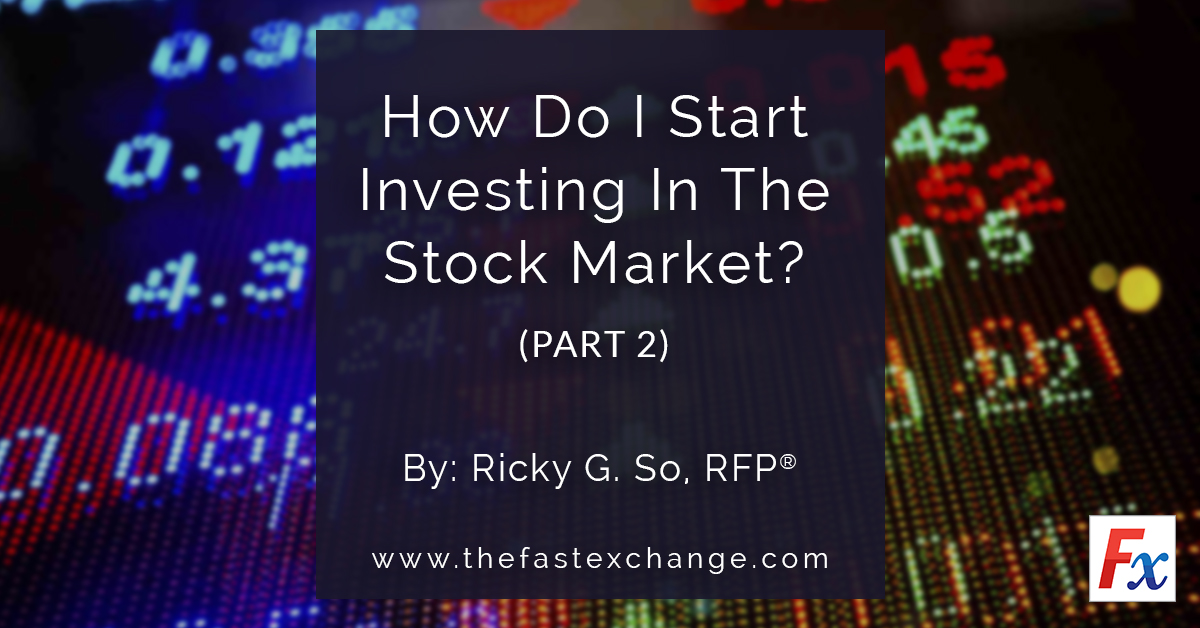
YOU HAVE OPENED AN ACCOUNT, NOW WHAT? (Stock Market Series Part 2)
Years ago, I was called in by a president of a stock brokerage firm after learning that I will be retiring from employment. In our meeting he revealed to me that they have more than 10,000 accounts that were idle. He needed help that time. These were opened on the encouragement by some personalities in the industry to trade and invest in the stock market. But clearly most were oblivious as to what to do next. There was no transaction since it was opened months earlier. He is afraid that most of these people thought that opening a stock broker account is all that is needed and the money in it will grow. No way!
Now that you have a broker account based on how to do it in the first part of this series, you might think the next step is what company do I buy? Not so fast. The next step is to know the rules of the trade. The PSE (Philippine Stock Exchange) is a central market place for securities dealing. It has rules, systems to follow in order for all the transaction to be carried out smoothly. As a stock trader or investor, especially in the Philippines, there is one system that is all important in trading. This is the board lot or the round lot system.
To simplify the board lot system. This means that trading stocks require a certain minimum. The minimum stocks to buy or sell is dependent on the price level of the stock being transacted. Say, the price of Stock A is Php 2.50, the minimum number of shares to transact is 1,000 shares. But for a stock that has a price of P25.00, the minimum shares to trade is now 100 shares. The table below sourced from PSE (www.pse.com.ph) will help you. One needs to be familiar with this. Because it might get you into trouble if you are not aware of this rule especially if you are a small trader. By small, we mean the capital is not as big and tends to invest in small portions or within the minimums as required by the board lot system.
What is the danger or the potential problem for some traders in this regard? Let us say, Mr. A is eyeing to buy a stock currently priced at P 5.30. If you look at the table, this price level dictates that the minimum is 100 shares and increments thereof. Then Mr. A decided to buy 800 shares. Multiply these two, P 5.30 X 800 shares = P 4,240.00 as the gross amount transacted. From this amount a broker’s fee will be added and other fees (SEC fee, PSE fee, SCCP fee). The fees are not the issue here. It is the price and the number of shares transacted. For IF, the price suddenly drops to P 4.95 and Mr. A wants to sell all the shares in order to avoid further losses, he cannot sell the 800 shares at 4.95. Because, at P 4.95 the minimum shares to be transacted becomes 1,000 shares. Since Mr. A is holding 800 shares, he cannot transact nor place an order to sell. The 800 shares at this point is going to be classified as ODD LOT. This means it is no longer in compliance with the minimum shares prescribed by the Board Lot System. The system or the broker will reject to accept the selling of 800 shares at 4.95. So what happens? Mr. A will have to wait until the price recovers to P 5.00 in order to be able to transact the 800 shares. But what if the price continues to drop? The shares will remain to be an odd lot. The remedy for this is that in the exchange, there is a specific trading board for Odd Lots. This is where it can be posted. But usually, prices on this Odd Lot Board is lower that the regular market price. So the choice is to wait for the price to recover or sell the odd shares at a discount in the Odd Lot Board. The other option for Mr. A is to buy 200 shares at the Odd Lot Board to up his total shares to 1,000. By doing so, he can now sell his shares on the regular board. Odd Lot Board is also a place where odd shares arising from stock dividends are being transacted.
On the flipside, a nice story will go like this - Mr. B decided to buy a stock with a price of P 4.00 a share and for just the board lot minimum of 1000 shares. He held on to the shares, perhaps for several years. Then one day, he saw the stock price currently at P 65.00. He wants to sell, how much shares can he now sell at P 65.00? Well, he can sell all of his 1000 shares or he can sell at least 10 shares at any time he wishes.

This board lot system is very important one should know before placing that order in the order form. Another rule to know is the trading hours. Below is the image from the PSE website showing the corresponding activity within the day’s trading session.

At 9AM, one can already place an order to buy (bid) or sell (ask) but cannot cancel it once clock ticks at 9:15 AM. Still traders can post their orders to buy or sell a particular stock. At 9:30 AM, the trading session starts as someone in the floor of the exchange bangs the opening bell. The market breaks from 12 noon to 1:30 PM. Then it resumes again. 10 minutes before the closing at 3:30 PM, is what is called the run-off period. By this time, the price of a stock will no longer change and can only be transacted at one price when the clock ticks at 3:20 PM.
The trading session and rules of trade are very important piece of information one should know in dealing with the local stock exchange. As it (BLS) may pose additional risk to the trader or investor if one is oblivious to the rule.


2 Responses
jonas poblete
Sir hm naman po initial deposit using fulltime brokerage?
Ricky So
Full time brokers or full service brokers (mas appropriate) do not require initial deposit. But they can accept if the client is willing or has some stocks to lodge. The reason behind is full service brokers are post paid schemes. Meaning, you can buy initially and pay the actual amount after 3 days from transaction (they call this T+3) I have not heard a full service broker asking for initial deposit. Thank you.